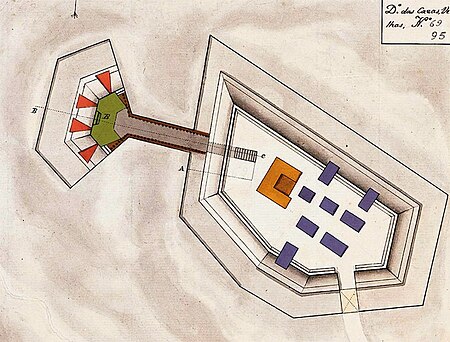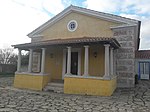Fort of Zambujal
Forts in PortugalLines of Torres VedrasNational monuments in Lisbon District

The Fort of Zambujal, also referred to as the Fort of Casas Velhas, is located near the town of Zambujal-Casas Velhas, in the parish of Carvoeira, municipality of Mafra, Lisbon District, Portugal. Constructed in 1809–10, at 102 metres above sea level, it was one of the forts and other military works built by British and Portuguese troops to protect Lisbon from French forces, forming part of the Second Line of defence of the so-called Lines of Torres Vedras. Each work was given a number and Zambujal was No. 95.
Excerpt from the Wikipedia article Fort of Zambujal (License: CC BY-SA 3.0, Authors, Images).Fort of Zambujal
Acesso do Forte,
Geographical coordinates (GPS) Address External links Nearby Places Show on map
Geographical coordinates (GPS)
| Latitude | Longitude |
|---|---|
| N 38.949166666667 ° | E -9.3894444444444 ° |
Address
Forte do Zambujal (Forte das Casas Velhas)
Acesso do Forte
2655-124
Portugal
Open on Google Maps










